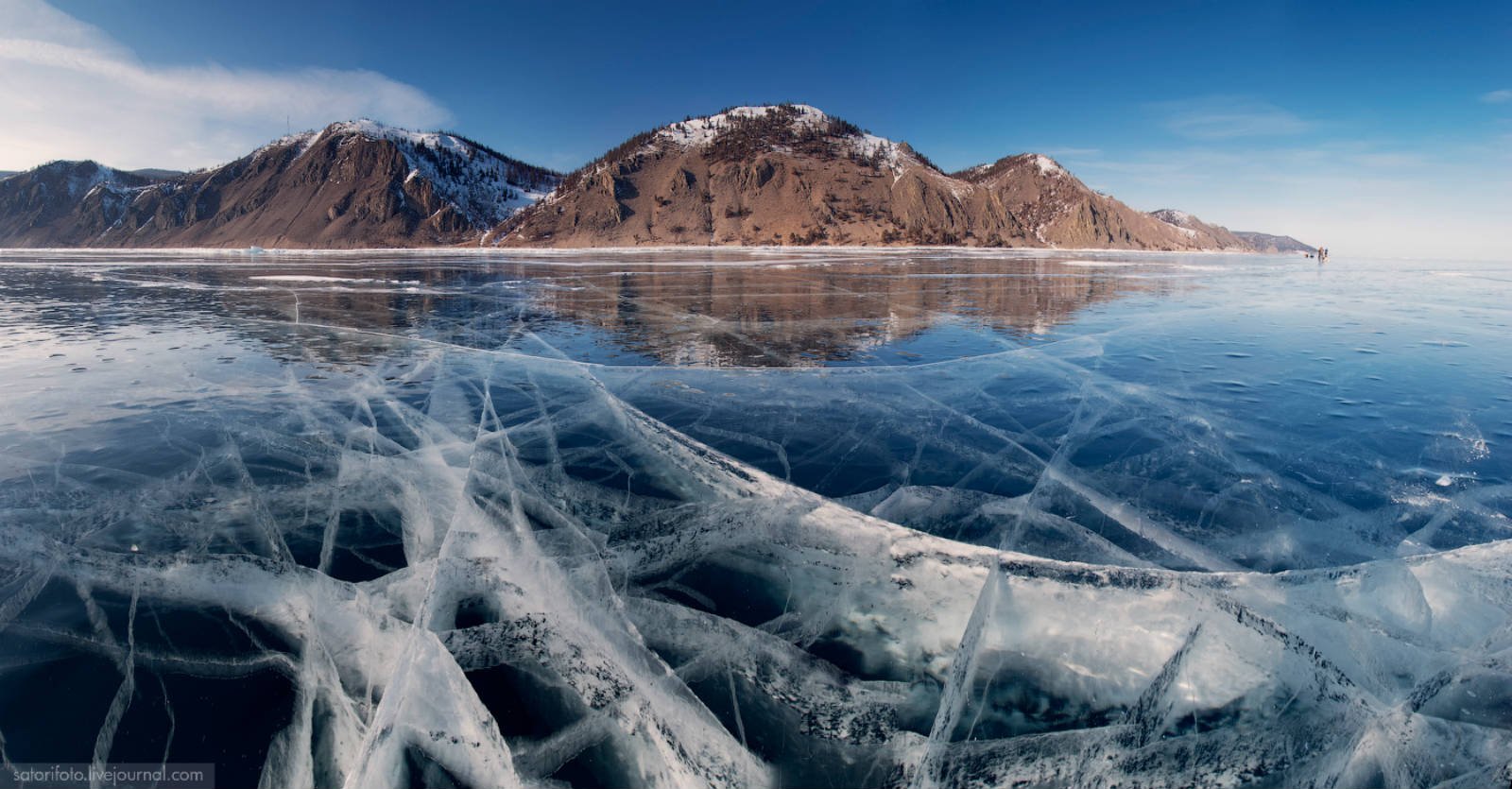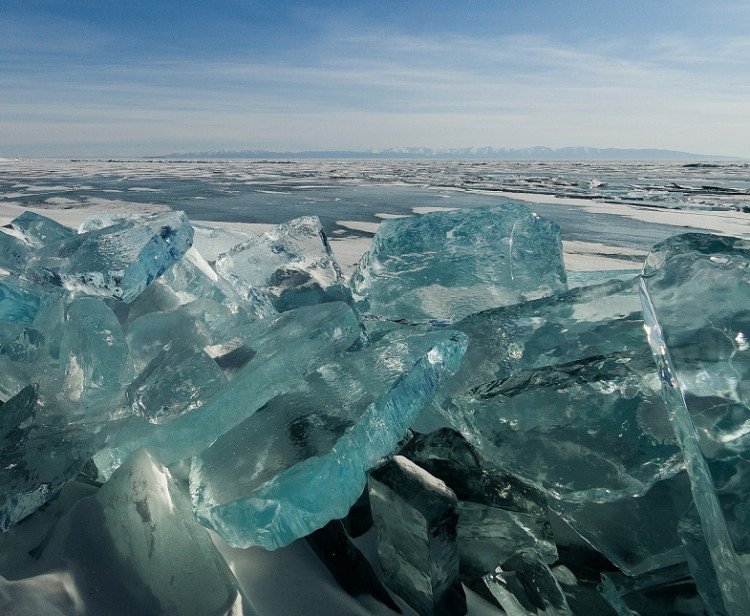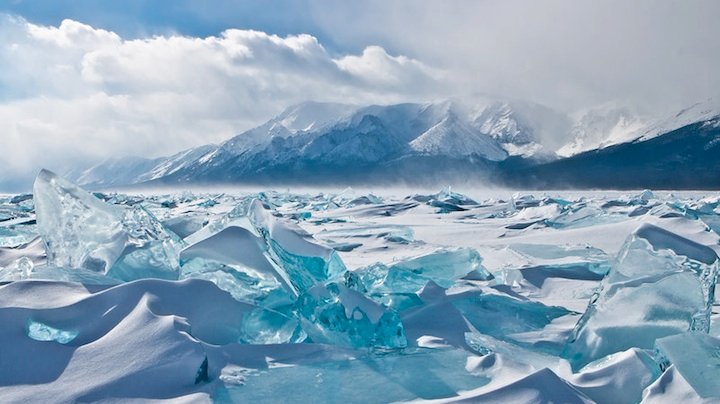Hello nature lovers!! Welcome back to another post on the strange phenomena series!! Today I want to show you some magnificent "sculptures" made of ice. Ice that came from water so clear, that it looks like turquoise glass!

(Image source: youtube.com)
Amazing isn't it? My friends, this is Siberian Lake Baikal. The largest fresh water deposit (1/5 of the planets clear water is in it) and probably the oldest lake on Earth (aging 20-25 million years).
Why the ice is not white?
The water of the lake is very clean, this means it has very low mineral salt concentration. As a result, when you look into the lake your eyes can see up to 40 meters deep. Air temperatures over the lake range from -6°F (-21°C) in winter and 52°F (11°C) in summer. From January to May or even June, the lake freezes. The water then turns into such clear crystals with no impurities to spoil their transparency. The thick ice (sometimes as thick as 2 meters) is so translucent and creates those lovely cracking patterns when it expands.

(Image source: pinterest.com)
Because of the wind and temperature differences over the lake, the ice cracks and huge lumps of glass, I mean ice, pop out and give those marvelous formations.

(Image source: laughingsquid.com)
Give me some facts
What else do you want to know? Well, it is situated on a rift valley in south-central Russia and is also referred to as an ocean-to-be water mass (it claims 2 cm of land every year, which means it's growing slowly). The lake is 1,632 meters deep, but the rift is covered by a heavy 7-kilometer-deep sediment layer (making a total depth of 8-11 kilometers). Earthquakes and hot springs are common in the area, because the crack on the earth's crust is relatively young and active.
The lake measures 636 kilometers in length and 79 kilometers in width, with a coastline of 2,100 kilometers and covers almost 31,700 square kilometers (no wonder why it's the biggest lake on the planet). There are about 45 islands on the lake and more than 330 streams and rivers feed it with fresh water all year round, whereas the outflow depends on only one, the Angara River.

(Image source: mymodernmet.com)
UNESCO also declared it a World Heritage Site in 1996. The huge body of well-oxygenated water (with oxygen levels just like ocean water) has created a mild micro-climate in the area which hosts about 1,000 plant and 2,500 animal species. Note that more than 4/5 of these animals are endemic species (you will find them only in Lake Baikal). The most renowned is Nerpa (the Baikal seal), one out of the three freshwater seal species. The weirdest animal in the lake, though, is the golomyanka, a translucent oil-fish without scales that can swim in waters deeper than 1,000 meters.
Who is threatening the lake?
Once again the human factor is posing a threat to the ecosystem of the lake with the tourism industry and dam construction which reduces the inflow of fresh water. Also, from 1966 to 2008, a paper pulp company had been taking advantage of the lake's water in paper making and then let the processed water back into the lake. Climate change has also caused a rise in the population of a toxic species of algae that poison fish, crustaceans, water snails and sponges, which in turn come to poison humans. It is obvious that if we don't take measures to protect the lake, we will let a rich and long-lived ecosystem die.
Here you can watch a video presenting more facts about the lake:
References
livescience.com
lakebaikal.org
wwf.panda.org
wikipedia.org

Another post came to its end! Thank you for stopping by and giving it a read. I hope it got your curiosity-radar on to follow me, @ruth-girl, for more fascinating phenomena!
If nature's weirdness is your thing, you can check some of the previous articles of this series:
12 - Underwater Crop Circles
13 - The Spotted Lake
14 - The Huge Crystals Cave
15 - Ice Brinicles
16 - The Clone Forest
17 - A Skypunch
18 - Lake Baikal
19 - Mother-Of-Pearls Clouds

And for those engaging with education, @steemiteducation is here to join all steemian educators in their common cause of making our job easier, more effective and more fun!
Finally, the greek community of steemit is here and waiting for you to discover it! Follow the @greek-trail for daily doses of good-quality posts by wonderful writers!
Until my next post,
Steem on, people, and keep smiling!


